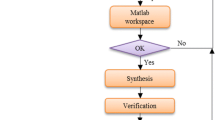Abstract
Progress in the digital multimedia technologies during the last decade has offered many facilities in the transmission, reproduction, and manipulation of data. However, this advancement has also brought the problem such as copyright protection for content providers. Digital watermarking is a proposed solution for copyright protection for multimedia. The goal of hardware assisted watermarking is to achieve low power usage, real-time performance, reliability, and ease of integration with existing consumer electronic devices. An efficient architecture for transform domain watermarking using quantization approach is proposed here. This architecture is optimized using pipelining. The main objective of this paper is to propose a very-large-scale integration (VLSI) architecture for robust and blind image watermarking chip. Watermarking architectures with and without pipeline are synthesized using Xilinx’s ISE for a field-programmable gate array (FPGA), and then semi-custom integrated chip is designed using UMC 0.18 μm technology standard cell library for both these architectures. The proposed optimized pipelined watermarking encoder core requires 0.027 mm2 area and 0.074 mW power.

















Similar content being viewed by others
References
I.J. Cox, J. Kilian, F.T. Leighton, T. Shamoon, Secure spread spectrum watermarking for multimedia, Proc.-IEEE Int. Conf. Image Process., 6(12), 1673–1687 (1997)
G. Doerr, J.L. Dugelay, A guide tour of video watermarking. Signal Process., Image Commun. 18(4), 263–282 (2003)
Y.C. Fan, L.D. Van, C.M. Huang, H.W. Tsao, Hardware-efficient architecture design of wavelet-based adaptive visible watermarking, in Proc. 9th IEEE Symp. on Consumer Electronics (2005), pp. 399–403
T. Hu, J. Wei, A digital video watermarking scheme based on 1D-DWT, in Biomedical Engineering and Computer Sciences (2010), pp. 1–3
S. Karmani, R. Djemal, R. Tourki, Efficient hardware architecture of 2-d-scan-based wavelet watermarking for image and video. Comput. Stand. Interfaces 31(4), 801–811 (2009)
E. Kougianos, S.P. Mohanty, R.N. Mahapatra, Hardware assisted watermarking for multimedia. Comput. Electr. Eng. 35(2), 339–358 (2008)
D. Kunder, Improved digital watermarking through diversity and attack characterization, in Proc. of ACM Workshop on Multimedia Security (1999)
X. Li, Y. Shoshan, A. Fish, G. Jullien, O. Yadid-Pecht, Hardware implementation of video watermarking, in International Book Series on Information Science and Computing (2008), pp. 9–16
W.H. Lin, S.J. Horng, T.W. Kao, P. Fan, C.L. Lee, Y. Pan, An efficient watermarking method based on significant difference of wavelet coefficient quantization. IEEE Trans. Multimed. 10(5), 746–757 (2008)
N.J. Mathai, D. Kunder, A. Sheikholeslami, Hardware implementation perspective of digital watermarking algorithms. IEEE Trans. Signal Process. 51(4), 925–938 (2003)
S.P. Mohanty, E. Kougianos, N. Ranganathan, VLSI architecture and chip for combined invisible and fragile watermarking. IET Comput. Digit. Tech. (CDT) 1(5), 600–611 (2007)
D. Profrock, M. Schluwaeg, E. Muller, A new uncompressed-domain video watermarking approach robust to h. 264/avc compression, in Proc. IASTED Conf. Signal Processing, Pattern Recognition/Applications (2006), pp. 99–104
A. Sequeira, D. Kundur, Communications and information theory in watermarking: a survey, in Proc. of SPIE Multimedia System and Application IV, vol. 4518 (2001), pp. 216–227
J.M. Shapiro, Embedded image coding using zero trees of wavelet coefficients. IEEE Trans. Signal Process. 41(12), 3445–3462 (1993)
T.H. Tsai, C. Lu, A systems level design for embedded watermark technique using DSC systems, in Proc. of the IEEE International Workshop on Intelligent Signal Processing and Communication Systems (2001)
S. Voloshynovskiy, S. Pereira, T. Pun, J. Eggers, J. Su, Attacks on digital watermarks: classification, estimation-based attacks and benchmarks. IEEE Commun. Mag. 39(8), 118–126 (2001)
C.-X. Wang, X. Nie, X. Wan, W.B. Wan, F. Chao, A blind video watermarking scheme based on DWT, in Intelligent Information Hiding and Multimedia Signal Processing (2009), pp. 434–437
L. Xie, G.R. Arce, Joint wavelet compression and authentification watermarking. Proc.-IEEE Int. Conf. Image Process., 2, 427–431 (1998)
Acknowledgements
This research work is partially supported by SMDP-II project sponsored by DIT, MCIT, Government of India.
Author information
Authors and Affiliations
Corresponding author
Rights and permissions
About this article
Cite this article
Darji, A.D., Lad, T.C., Merchant, S.N. et al. Watermarking Hardware Based on Wavelet Coefficients Quantization Method. Circuits Syst Signal Process 32, 2559–2579 (2013). https://doi.org/10.1007/s00034-013-9550-2
Received:
Revised:
Published:
Issue Date:
DOI: https://doi.org/10.1007/s00034-013-9550-2




